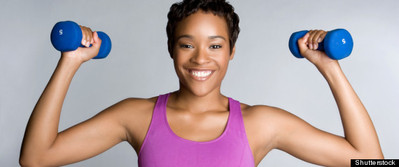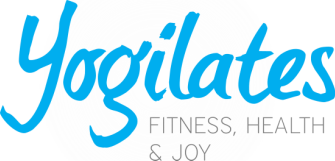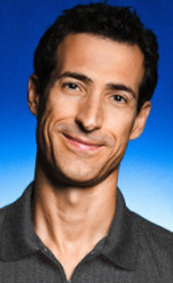
After we reach adulthood, the size of our muscles is largely determined by our everyday activity. Generally, people become less active as they get older and muscles will atrophy (get smaller) from this disuse. If you remain active, then muscle size and strength will remain as you age. If you stress the muscles regularly through exercise, then they will increase in density as they become stronger. However, only if you stress them intensely, and eat lots of protein, will your muscles grow in size. This is what bodybuilders try to do. It is very hard to actually gain weight from just lifting weights however, because as your muscle fitness improves, your metabolism increases. This means you will burn more calories even at rest. So, someone who lifts weights as part of their exercise routine will burn more fat than someone who doesn’t and will get leaner. That is why the women in the study who used heavier weights actually lost weight compared to the women who did lighter weights for more repetitions. Which is not to say that lifting light weights doesn’t have any benefit. Everyone should start with light weights to establish good form first before progressing to heavier weights. In addition, certain benefits and purposes are only achieved when the weight is light enough to allow the deeper intrinsic muscles to work properly. This is especially true for many Pilates exercises and also in general for circular and rotational movements. Most, if not all, people who only lift heavy weights for strength exercise are lacking in functional strength because of the neglect of the intrinsic muscles.
Getting back to the mystery of people who have large muscles, but not from lifting weights; the root cause is poor posture and inefficient movement. Let’s look at large trapezius muscles, which are the muscles on top of the shoulders going up the base of the neck from the back. These get overdeveloped when someone habitually lifts objects by first pulling up the shoulder. This habit becomes unconscious and even when lifting a pencil, the muscle firing sequence begins with the trapezius so that even when the weight is minimal, the muscle still gets contracted. Over time, the subject may even try to lift their body weight with the trapezius, e.g. when moving from sitting to standing, or when straightening up from a forward bend. The muscular imbalance is perpetuated by inefficient movement, excessive tension in the area, and is often combined with forward head posture and rounded shoulders. Learning to isolate and articulate the shoulders, and learning to release unnecessary tension through breathwork and stretching, are key to training the subject to bring more balance to this area of the body.
Another common area of overdevelopment of muscles is in the hip, primarily the medial gluteals, which are higher than the gluteus maximus and more toward the sides of the hips. The primary cause of this problem is a forward leaning posture usually stemming from an anterior tilted pelvis, and sometimes coupled with weak quadriceps. Leaning forward even a few degrees will shift weight bearing from the legs to the gluteals. Every time the subject stands or walks, they are holding the weight of their upper torso with the gluteals. This repetitive stress on the muscles will build them up, though without adding more strength. In fact, the strength of muscles held in constant tension is usually less than a normal muscle. For this person, corrective postural exercises for the pelvis, along with stretching and core work will hopefully bring down the hypertrophied area and lead to more efficient movement.
I hope this article was helpful and made you think a little. Please post your comments or thoughts.


 RSS Feed
RSS Feed
